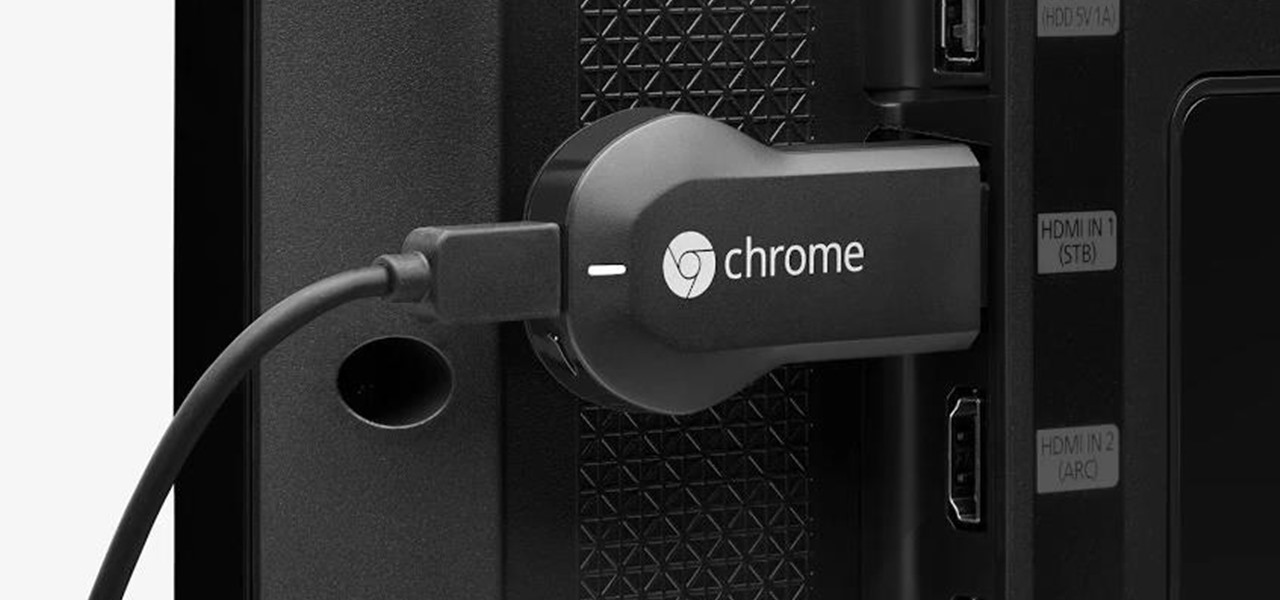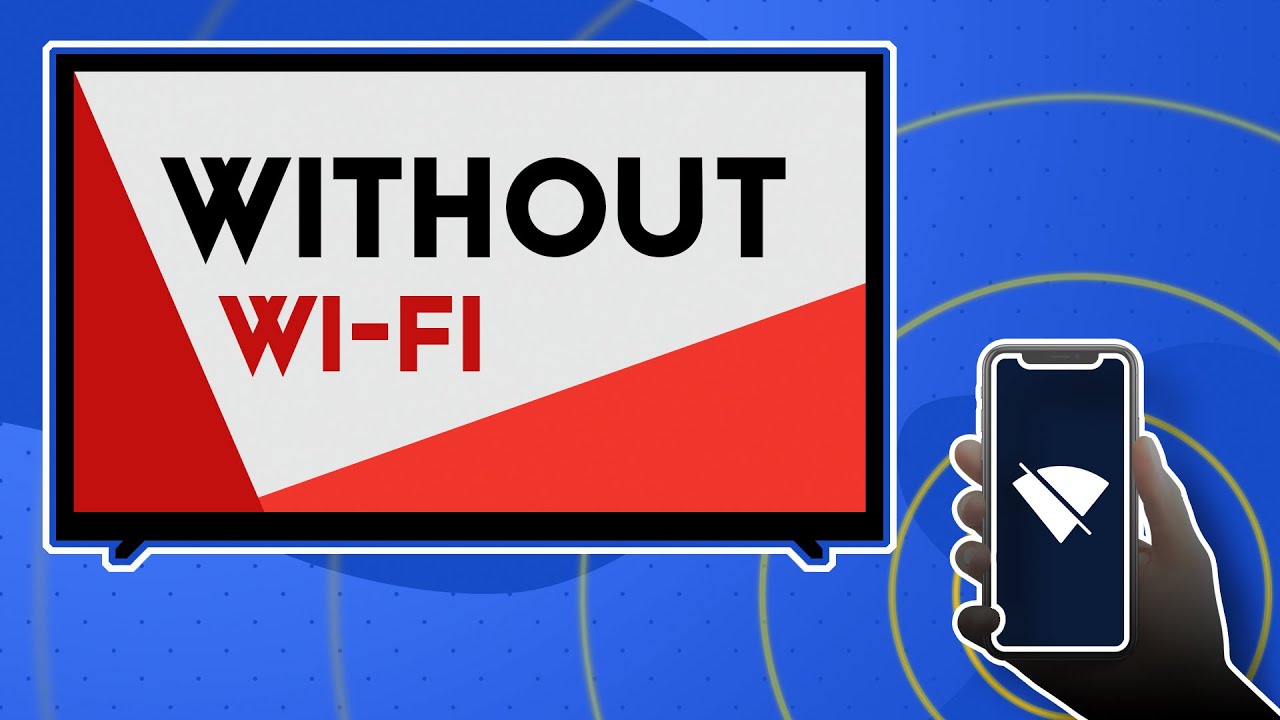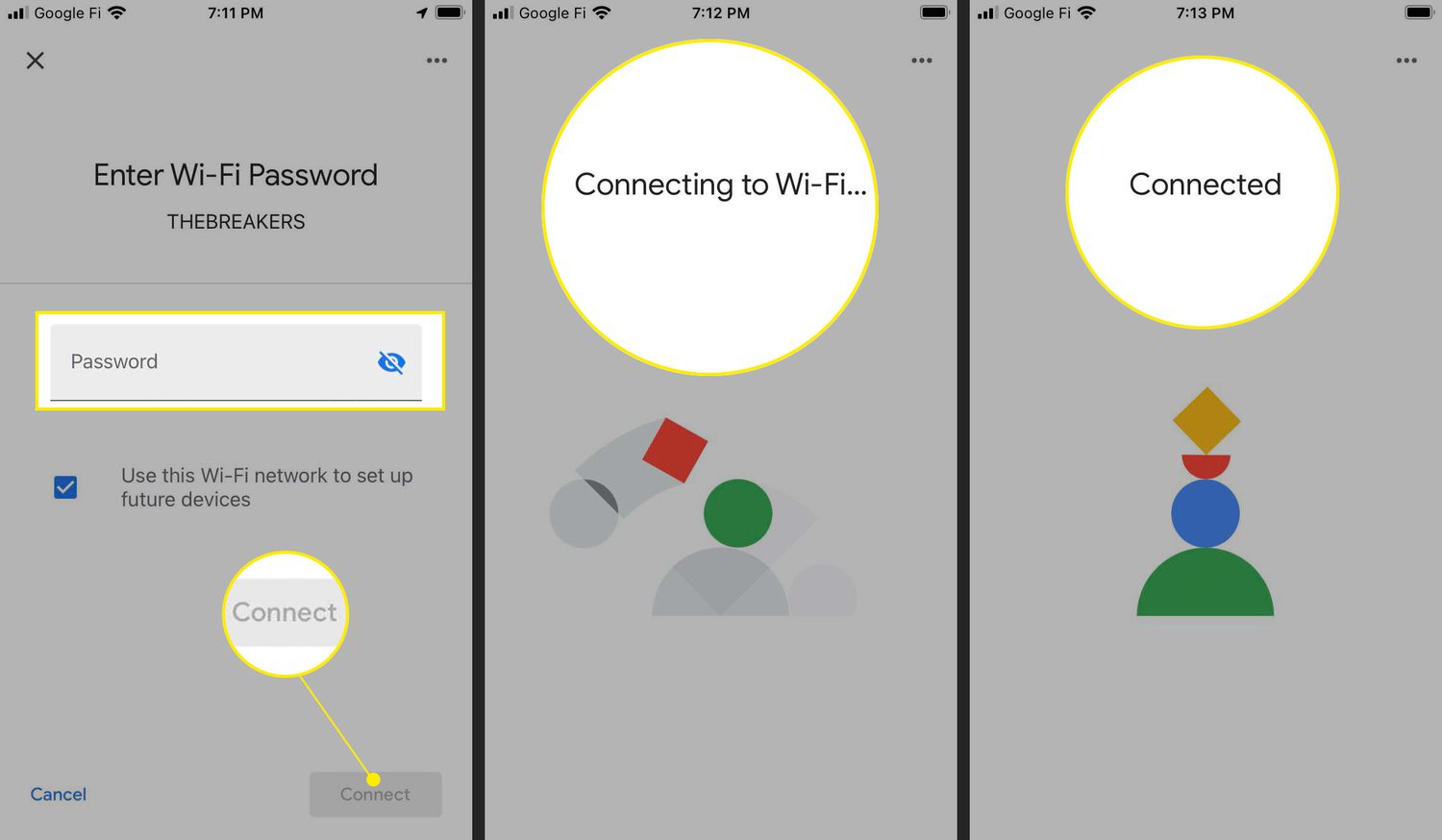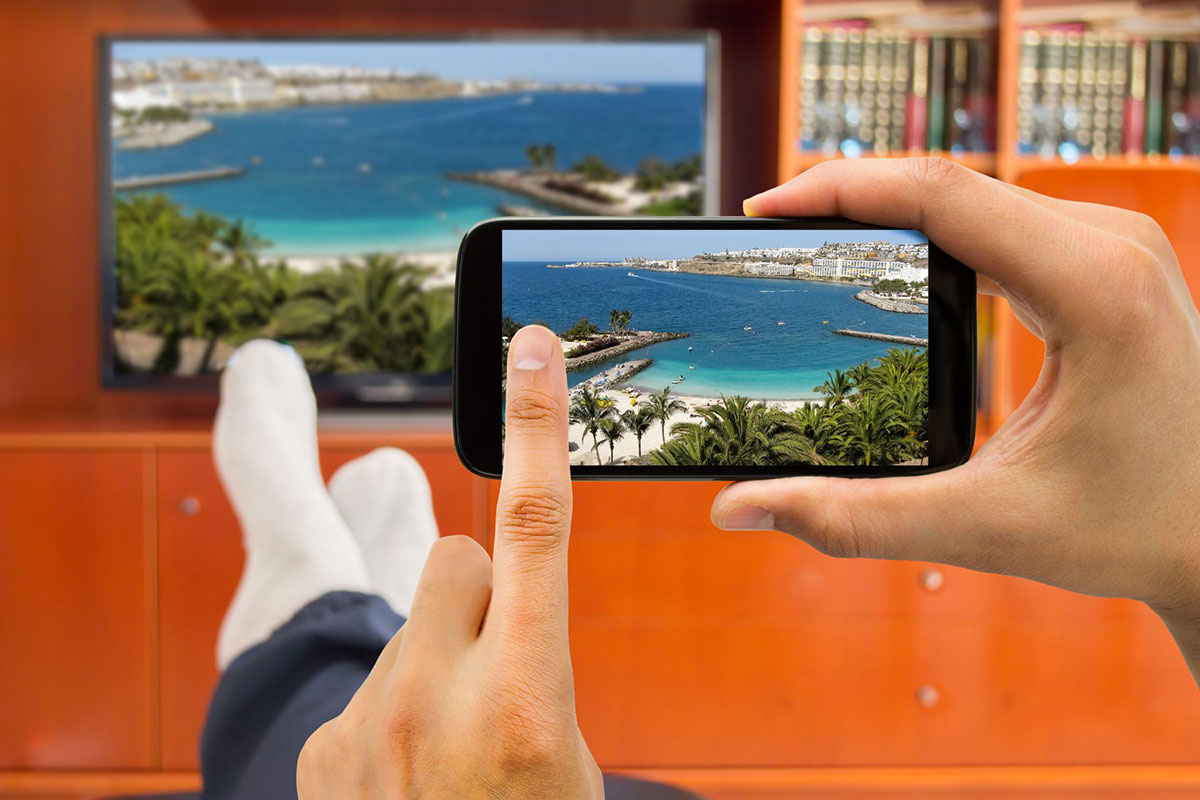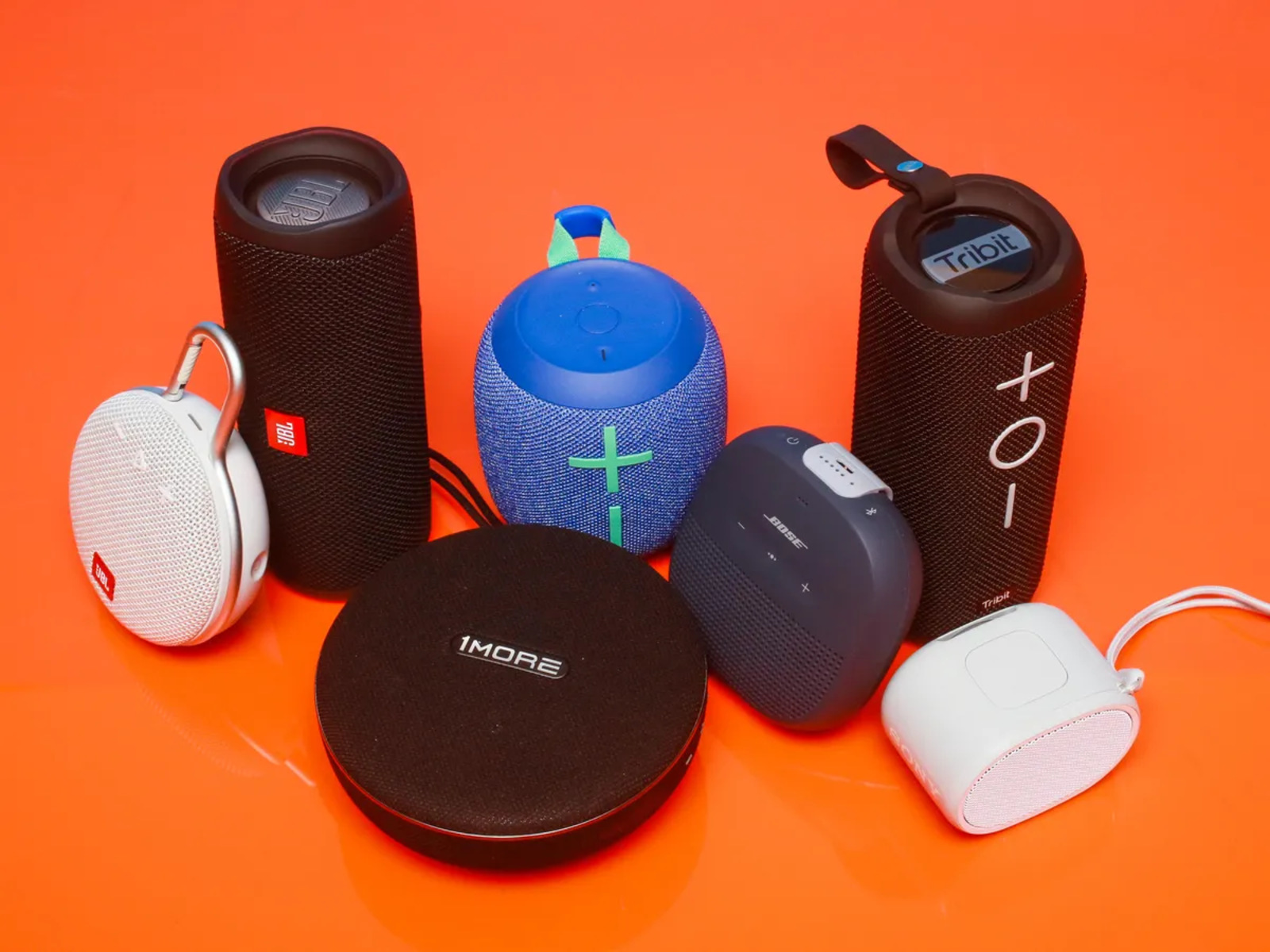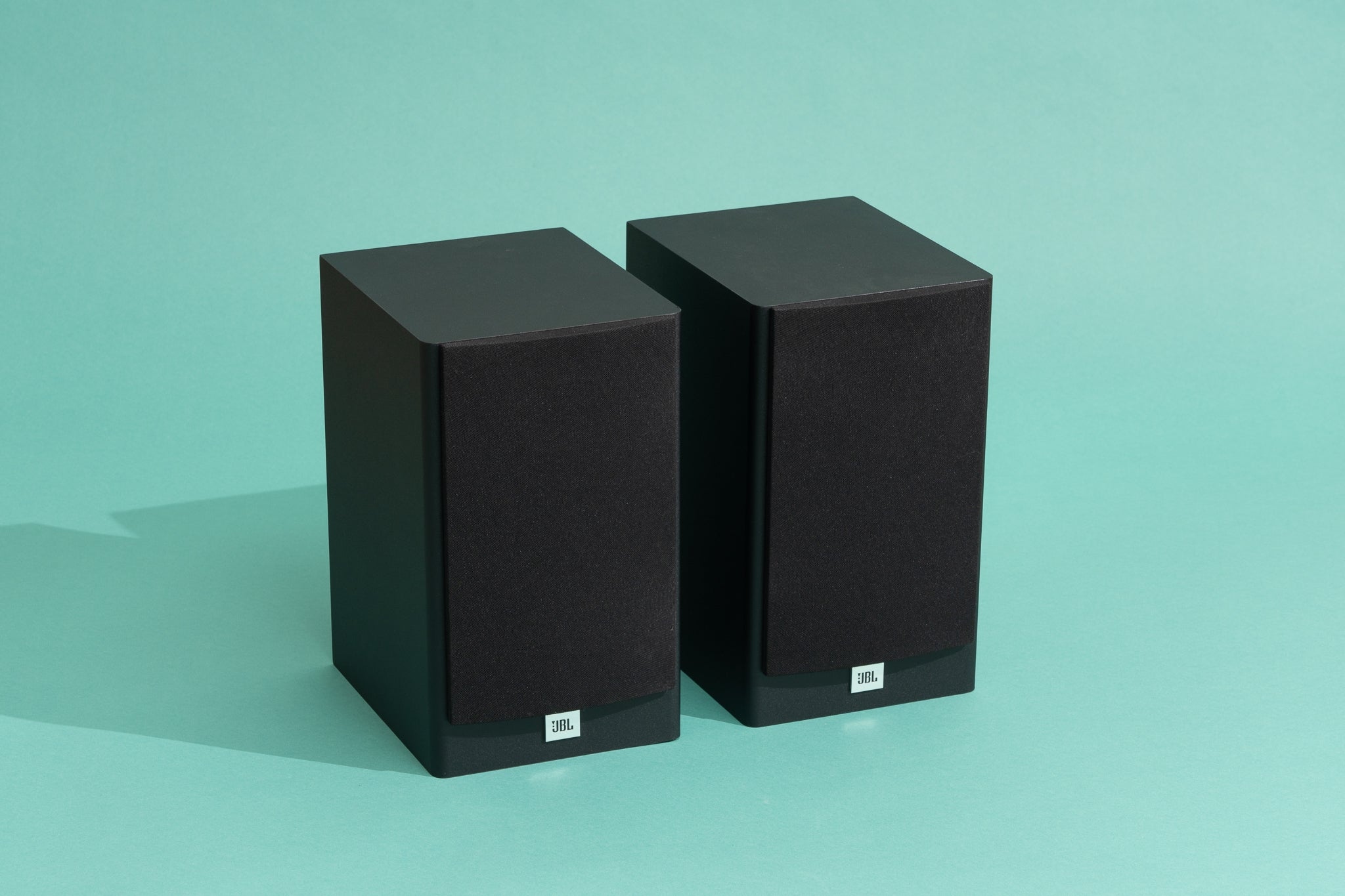Introduction
Welcome to the world of Chromecast! A revolutionary device that allows you to stream your favorite content from your mobile device or computer to your TV with just a few taps. Chromecast has transformed the way we consume media, making it easy and convenient to enjoy movies, TV shows, music, and more on the big screen.
But what if you find yourself in a situation where you don’t have access to a Wi-Fi network? Can you still use Chromecast? The answer is yes! In this article, we will explore how you can use Chromecast without Wi-Fi.
Chromecast is a small dongle-like device that plugs into the HDMI port of your TV. It connects to your home Wi-Fi network and acts as a receiver for streaming content from various devices. With the help of compatible apps, such as Netflix, YouTube, Spotify, and many others, you can stream content directly to your TV.
Typically, Chromecast relies on a Wi-Fi connection to work. It needs to be connected to the same Wi-Fi network as your mobile device or computer. This allows for seamless communication between devices and the smooth streaming of content. However, there are certain scenarios where having a Wi-Fi network may not be possible or practical.
Fortunately, there are several workarounds that allow you to set up and use Chromecast without Wi-Fi. In the following sections, we will explore these options in detail, providing step-by-step instructions on how to make the most out of your Chromecast even without a Wi-Fi network.
What is Chromecast?
Chromecast is a media streaming device developed by Google. It is designed to deliver a seamless and user-friendly experience for streaming content from your mobile device or computer to your TV. Unlike traditional set-top boxes or smart TVs, Chromecast is a small and affordable dongle that connects to the HDMI port of your TV.
With Chromecast, you can access a wide range of streaming services, such as Netflix, Hulu, Spotify, YouTube, and many more. It gives you the ability to mirror the screen of your Android or iOS device onto your TV, allowing you to enjoy your favorite apps, games, and content on a larger display.
Using Chromecast is incredibly simple. Once you have connected the device to your TV, you can control it using your mobile device or computer. All you need is a compatible app or the Google Chrome browser, which acts as a remote control for casting content to your TV.
Chromecast supports both video and audio streaming, making it a versatile device for entertainment purposes. You can stream movies, TV shows, music, podcasts, and even browse the web on your TV with just a few taps or clicks.
One of the key advantages of Chromecast is its affordability and portability. It is a highly cost-effective solution for turning your regular TV into a smart TV. Its compact design allows you to easily carry it with you wherever you go, making it a perfect companion for travel or for setting up a media streaming system in different rooms.
Chromecast also offers multi-room audio capabilities, enabling you to synchronize multiple Chromecast devices to play the same audio content throughout your home. This creates a seamless and immersive audio experience, perfect for parties or simply enjoying your favorite tunes in every room.
In essence, Chromecast is a versatile and user-friendly device that enhances your entertainment options by allowing you to stream content from your mobile device or computer to your TV. Its simplicity, affordability, and wide range of supported streaming services make it a popular choice among users worldwide.
How does Chromecast usually work with Wi-Fi?
Chromecast is designed to work seamlessly with a Wi-Fi network. When you set up Chromecast for the first time, it connects to your home Wi-Fi network, allowing it to communicate with your mobile device or computer that is also connected to the same Wi-Fi network. This connection enables the two devices to exchange information and stream content from your device to the TV.
Once your Chromecast is connected to your Wi-Fi network, you can use compatible apps on your mobile device or computer to cast content to your TV. For example, if you are using a streaming app like Netflix or YouTube, you can open the app on your device, select a video, and then tap the cast button. The video will start playing on your TV, while your mobile device or computer acts as a remote control.
Chromecast uses a technology called “tab casting” for streaming content from your computer’s web browser. With tab casting, you can mirror the contents of your browser tab, including videos, websites, and more, onto your TV. This allows you to browse the web on your computer and have the content displayed on the big screen.
Additionally, Chromecast supports the use of multiple devices. This means that multiple users in your home can connect their mobile devices or computers to Chromecast and take turns casting content to the TV. Each user has control over their own device and can choose what to stream without interrupting others.
Another noteworthy feature of Chromecast is its ability to continue streaming even when your mobile device or computer is turned off or disconnected from Wi-Fi. Once you start casting a video or audio file, the Chromecast takes over the streaming process directly from the internet. This means you can watch your favorite show or listen to music on your TV without draining the battery or affecting the performance of your mobile device or computer.
Overall, Chromecast’s integration with Wi-Fi enables a seamless and convenient streaming experience. It allows you to effortlessly cast content from your mobile device or computer to your TV, transforming it into a powerful media hub for all your entertainment needs.
How to set up Chromecast without Wi-Fi?
While Chromecast is primarily designed to work with a Wi-Fi network, there are several ways you can set it up and use it without Wi-Fi. These workarounds allow you to enjoy your Chromecast even in situations where a Wi-Fi network is not available or accessible. Let’s explore some of these options:
Option 1: Use a mobile hotspot
If you have a smartphone with a data plan, you can create a mobile hotspot and connect your Chromecast to it. This allows your Chromecast to utilize your phone’s cellular data connection for streaming content. Simply enable the hotspot feature on your phone, connect your Chromecast to the hotspot, and follow the regular setup process. Keep in mind that using a mobile hotspot may consume a significant amount of data, so ensure you have an adequate data plan.
Option 2: Use an Ethernet adapter
Chromecast has an HDMI port and a micro-USB port. Some models of Chromecast, such as the Chromecast Ultra, have an additional Ethernet port. You can use an Ethernet adapter to directly connect your Chromecast to your router using an Ethernet cable. This eliminates the need for a Wi-Fi connection and ensures a stable and reliable connection for streaming content. Simply plug one end of the Ethernet cable into the adapter and the other end into the Ethernet port on your Chromecast.
Option 3: Use a router with a built-in Ethernet port
If your router has a built-in Ethernet port, you can connect your Chromecast directly to the router using an Ethernet cable. This option provides a stable and dedicated internet connection for your Chromecast, bypassing the need for a Wi-Fi network. Simply plug one end of the Ethernet cable into the Ethernet port on your router and the other end into the Ethernet port on your Chromecast.
Option 4: Use a Wi-Fi range extender with an Ethernet port
If you have a Wi-Fi range extender with an Ethernet port, you can connect your Chromecast to it. A Wi-Fi range extender amplifies your existing Wi-Fi signal, extending its range and coverage. By connecting your Chromecast to the range extender using an Ethernet cable, you can create a dedicated connection for streaming content without relying on a Wi-Fi network. Simply plug one end of the Ethernet cable into the Ethernet port on the range extender and the other end into the Ethernet port on your Chromecast.
Option 5: Use a wired-to-wireless adapter
A wired-to-wireless adapter is a device that allows you to convert a wired connection into a wireless one. You can connect your Chromecast to the wired-to-wireless adapter using an Ethernet cable, and the adapter will establish a Wi-Fi connection for your Chromecast. This option is particularly useful if you have an Ethernet connection but no Wi-Fi network. Simply plug one end of the Ethernet cable into the adapter and the other end into the Ethernet port on your Chromecast.
Remember, these alternatives may require additional equipment or configurations. It’s important to carefully follow the instructions provided by the manufacturer of the equipment you are using and ensure compatibility with your Chromecast model.
By using these workarounds, you can set up and use your Chromecast without Wi-Fi, enabling you to enjoy your favorite content on the big screen even in the absence of a Wi-Fi network.
Option 1: Use a mobile hotspot
If you find yourself without access to a Wi-Fi network but have a smartphone with a data plan, using a mobile hotspot is a convenient way to set up and use Chromecast. A mobile hotspot turns your smartphone into a portable router, allowing you to create a localized Wi-Fi network for your devices.
To utilize this option, follow these steps:
- Ensure that your smartphone’s data plan supports mobile hotspot functionality. If you’re unsure, contact your mobile service provider.
- On your smartphone, go to the settings and locate the mobile hotspot or tethering option.
- Enable the mobile hotspot feature. You may need to set a password for the hotspot network to prevent unauthorized access.
- Connect your Chromecast to the mobile hotspot network. On your Chromecast, go to the Google Home app on your mobile device and set up the Chromecast as usual. During the setup process, you’ll be prompted to select a Wi-Fi network. Choose your smartphone’s mobile hotspot network from the list and enter the password if required.
- Complete the setup process as instructed in the Google Home app.
Once your Chromecast is connected to the mobile hotspot, you can cast content to your TV from your mobile device or computer. Open a compatible app, such as Netflix or YouTube, and select the content you want to stream. Look for the cast button within the app and tap it to start casting the content to your TV.
Keep in mind that using a mobile hotspot for Chromecast may consume a significant amount of your data plan, especially if you are streaming high-definition videos or using data-intensive applications. Ensure that you have an adequate data plan to avoid unexpected charges.
In addition, due to the limitations of mobile data networks, you may experience slower internet speeds and potential latency issues compared to a traditional Wi-Fi network. This can result in buffering or lower quality video playback. Consider adjusting the video quality settings in the casting app to optimize your streaming experience.
Using a mobile hotspot is a flexible solution for setting up and using Chromecast without Wi-Fi. It allows you to enjoy your favorite content on the big screen, even in scenarios where a Wi-Fi network is not available. Just ensure that you have sufficient data and take note of any potential limitations to ensure a smooth streaming experience.
Option 2: Use an Ethernet adapter
If you have a Chromecast model that includes an Ethernet port, such as the Chromecast Ultra, you can set up and use Chromecast without Wi-Fi by connecting it to your router using an Ethernet adapter. This option provides a stable and reliable internet connection for seamless streaming. Here’s how you can do it:
- Make sure you have an Ethernet adapter that is compatible with your Chromecast model. The adapter should have a micro-USB port on one end and an Ethernet port on the other.
- Connect one end of an Ethernet cable to the Ethernet port on the adapter.
- Plug the micro-USB end of the adapter into the micro-USB port on your Chromecast.
- Connect the other end of the Ethernet cable to an available Ethernet port on your router.
- Plug the power cord of your Chromecast into an electrical outlet to power it on.
Once you have completed the setup, your Chromecast will be connected to your router via the Ethernet adapter. This direct connection ensures a stable and reliable internet connection without relying on a Wi-Fi network.
Next, open the Google Home app on your mobile device and complete the setup process for your Chromecast as usual. When prompted to select a Wi-Fi network, you can ignore the Wi-Fi networks listed since you are using a wired connection. Proceed with the setup by following the instructions in the Google Home app.
After completing the setup, you can cast content to your TV using compatible streaming apps on your mobile device or computer. Open the desired app, select the content you want to stream, and tap the cast button. The content will now be streamed directly to your TV via the Ethernet connection.
Using an Ethernet adapter for Chromecast eliminates the need for a Wi-Fi network and provides a reliable and stable connection for uninterrupted streaming. It is particularly beneficial in situations where a Wi-Fi network is not available or the signal strength is poor.
Remember that the use of an Ethernet adapter is only applicable to Chromecast models that feature an Ethernet port. Ensure that you have the correct adapter for your Chromecast model and follow the aforementioned steps to enjoy Chromecast without Wi-Fi.
Option 3: Use a router with a built-in Ethernet port
If you have a router that has a built-in Ethernet port, you can set up and use Chromecast without Wi-Fi by directly connecting your Chromecast to the router. This option provides a stable and reliable connection for streaming content to your TV. Here’s how you can do it:
- Make sure you have a router with a built-in Ethernet port. Most routers have at least one Ethernet port, but check the specifications of your router to confirm.
- Connect one end of an Ethernet cable to the Ethernet port on your Chromecast.
- Plug the other end of the Ethernet cable into an available Ethernet port on your router.
- Plug the power cord of your Chromecast into an electrical outlet to power it on.
Once you have completed the physical setup, you can proceed with the software setup of your Chromecast. Open the Google Home app on your mobile device and follow the instructions to set up your Chromecast as usual. During the setup process, you can skip the step to connect to a Wi-Fi network since you are using a wired connection. Simply proceed with the setup by following the instructions in the Google Home app.
After completing the setup, you can start casting content to your TV from compatible streaming apps on your mobile device or computer. Open the desired app, select the content you want to stream, and tap the cast button. The content will now be streamed directly to your TV via the Ethernet connection.
The use of a router with a built-in Ethernet port provides a dedicated connection for your Chromecast without the need for a Wi-Fi network. This setup ensures a stable and reliable internet connection for uninterrupted streaming.
It is worth noting that not all routers have a built-in Ethernet port, especially those designed for wireless-only connections. If your router does not have an Ethernet port, consider exploring other options mentioned in this article or invest in a router that supports Ethernet connections.
By connecting your Chromecast directly to a router with a built-in Ethernet port, you can enjoy all the benefits of Chromecast without the need for a Wi-Fi network, providing a reliable and wired streaming experience.
Option 4: Use a Wi-Fi range extender with an Ethernet port
If you have a Wi-Fi range extender with an Ethernet port, you can set up and use Chromecast without Wi-Fi by connecting your Chromecast to the range extender. This option allows you to create a dedicated connection for your Chromecast, ensuring a stable and reliable streaming experience. Here’s how you can do it:
- Make sure you have a Wi-Fi range extender that has an Ethernet port. Check the specifications of your range extender to confirm.
- Connect one end of an Ethernet cable to the Ethernet port on your Chromecast.
- Plug the other end of the Ethernet cable into the Ethernet port on the range extender.
- Follow the instructions provided by the manufacturer to set up and configure the range extender. This typically involves connecting to the range extender’s Wi-Fi network and accessing its settings through a web browser on a computer or mobile device.
- Once the range extender is set up, connect your mobile device or computer to the range extender’s Wi-Fi network.
- Open the Google Home app on your mobile device and follow the instructions to set up your Chromecast as usual. During the setup process, select the range extender’s Wi-Fi network from the list of available networks.
- Complete the setup process as instructed in the Google Home app.
Once your Chromecast is connected to the range extender via Ethernet, it will have a dedicated and stable connection for streaming content. With the range extender amplifying and extending your Wi-Fi signal, you can enjoy seamless streaming on your TV without relying on a traditional Wi-Fi network.
When casting content from compatible streaming apps on your mobile device or computer, the data will be transmitted through the range extender to your Chromecast via the Ethernet connection. This allows for a reliable and uninterrupted streaming experience.
Keep in mind that the performance of the range extender may vary depending on factors such as its distance from your router and the strength of the original Wi-Fi signal. Ensure that the range extender is placed in an optimal location to maximize its effectiveness.
Using a Wi-Fi range extender with an Ethernet port is a great solution for extending your Wi-Fi network and providing a dedicated connection for your Chromecast. This method allows you to enjoy all the features of Chromecast without the need for a traditional Wi-Fi network.
Option 5: Use a wired-to-wireless adapter
An alternative way to set up and use Chromecast without Wi-Fi is by using a wired-to-wireless adapter. This device allows you to convert a wired connection into a wireless one, enabling you to connect your Chromecast to a Wi-Fi network even without built-in Wi-Fi capabilities. Here’s how you can utilize this option:
- Obtain a wired-to-wireless adapter that is compatible with your Chromecast model. The adapter should have an Ethernet port on one end and a wireless interface on the other.
- Connect the Ethernet port of your Chromecast to the Ethernet port on the adapter using an Ethernet cable.
- Plug the power cord of the adapter into an electrical outlet to power it on.
- Using a computer or mobile device, follow the instructions provided by the adapter manufacturer to configure the adapter. This typically involves connecting to the adapter’s wireless network and accessing its settings through a web browser.
- Once the adapter is set up, connect your mobile device or computer to the adapter’s wireless network.
- Open the Google Home app on your mobile device and proceed with the setup process for your Chromecast as usual. When prompted to select a Wi-Fi network, choose the wireless network provided by the wired-to-wireless adapter.
- Complete the setup process as instructed in the Google Home app.
By using a wired-to-wireless adapter, you can now cast content from compatible streaming apps on your mobile device or computer to your Chromecast. The adapter will convert the wireless signal from your device to a wired connection for your Chromecast, allowing for seamless streaming on your TV without the requirement of a direct Wi-Fi network connection.
It’s important to note that the performance of the wired-to-wireless adapter may depend on factors such as the distance between the adapter and your mobile device or computer, as well as potential signal interference. Ensure that the adapter is placed in an optimal location for the best wireless coverage.
Using a wired-to-wireless adapter gives you the flexibility to connect your Chromecast to a Wi-Fi network even if it lacks built-in Wi-Fi capabilities. This option provides a viable solution for using Chromecast without an existing Wi-Fi network and allows you to enjoy all the features and benefits that Chromecast has to offer.
Tips for using Chromecast without Wi-Fi
When using Chromecast without a Wi-Fi network, there are a few tips and considerations to keep in mind to ensure a smooth and enjoyable streaming experience:
1. Check your data plan:
If you are using a mobile hotspot or any other method that requires cellular data, make sure you have a sufficient data plan that can support your streaming needs. Streaming content, especially high-definition videos, can consume a significant amount of data. Monitor your data usage and consider adjusting the quality settings in streaming apps to optimize data usage if necessary.
2. Position your devices and setup for optimal performance:
Place your Chromecast, mobile device, or computer in a location where they can maintain a strong and stable connection. Ensure that there are no physical obstructions or interference from other devices that could impact the signal strength.
3. Reduce latency with a wired connection:
If possible, use a wired connection option like an Ethernet adapter or a wired-to-wireless adapter. A wired connection can minimize latency and offer a more reliable streaming experience compared to relying solely on wireless connections.
4. Adjust video quality settings:
If you experience buffering or stuttering during playback, consider reducing the video quality settings in the streaming app on your device. Lowering the resolution can help ensure smoother playback by reducing the demand on your network connection.
5. Keep devices updated:
Regularly update your Chromecast, mobile device, and streaming apps to the latest versions. Software updates often include performance improvements and bug fixes that can enhance your streaming experience.
6. Utilize a wired internet connection for other devices:
If you are using a mobile hotspot or a wired-to-wireless adapter, you can connect your computer or other devices to the same network for internet access. This allows you to stream content on multiple devices while using the primary connection for your Chromecast streaming.
7. Test different setups:
Experiment with different options mentioned earlier in this article to find the setup that works best for your specific situation. Each method may have its own advantages and limitations, so give them a try and see which one provides the optimal performance for your needs.
Remember, while these tips can help enhance your Chromecast experience without a Wi-Fi network, it’s important to ensure that you have the necessary data plan, compatible equipment, and an understanding of the limitations of your chosen setup.
By following these tips, you can make the most out of your Chromecast without relying on a Wi-Fi network and enjoy your favorite content on the big screen with ease.
Conclusion
Chromecast is an incredible device that has revolutionized the way we stream and enjoy content on our TVs. While it is designed to work seamlessly with a Wi-Fi network, there are various options available for using Chromecast without Wi-Fi, allowing you to stream your favorite movies, TV shows, and music even in situations where a Wi-Fi connection is not available or accessible.
By using a mobile hotspot, connecting to an Ethernet adapter or a router with a built-in Ethernet port, utilizing a Wi-Fi range extender, or employing a wired-to-wireless adapter, you can establish a reliable and stable connection for your Chromecast. These workarounds provide flexibility and ensure that you can enjoy the full functionality of Chromecast, even without a Wi-Fi network to rely on.
When setting up Chromecast without Wi-Fi, it’s essential to consider factors such as data usage, device positioning, connection stability, and video quality settings to optimize your streaming experience. Paying attention to these details can help ensure smooth playback and an enjoyable streaming experience.
Remember to check your data plan if you are using cellular data as it may be consumed quickly while streaming. Additionally, position your devices effectively, adjust video quality settings if needed, and keep your devices updated to the latest software versions for optimal performance.
Ultimately, Chromecast offers the convenience and flexibility to stream content from various devices to your TV, and with the options discussed in this article, you can still enjoy this experience without relying on a Wi-Fi connection.
So whether you’re on a road trip, staying in a location without Wi-Fi, or simply want to utilize a more stable connection, you can rely on these alternative methods to set up and use Chromecast without Wi-Fi.
With the information and tips provided in this article, you’re now equipped to make the most out of your Chromecast, regardless of the availability of a Wi-Fi network. Enjoy your favorite content on the big screen and transform your TV into a powerful entertainment hub with Chromecast.







